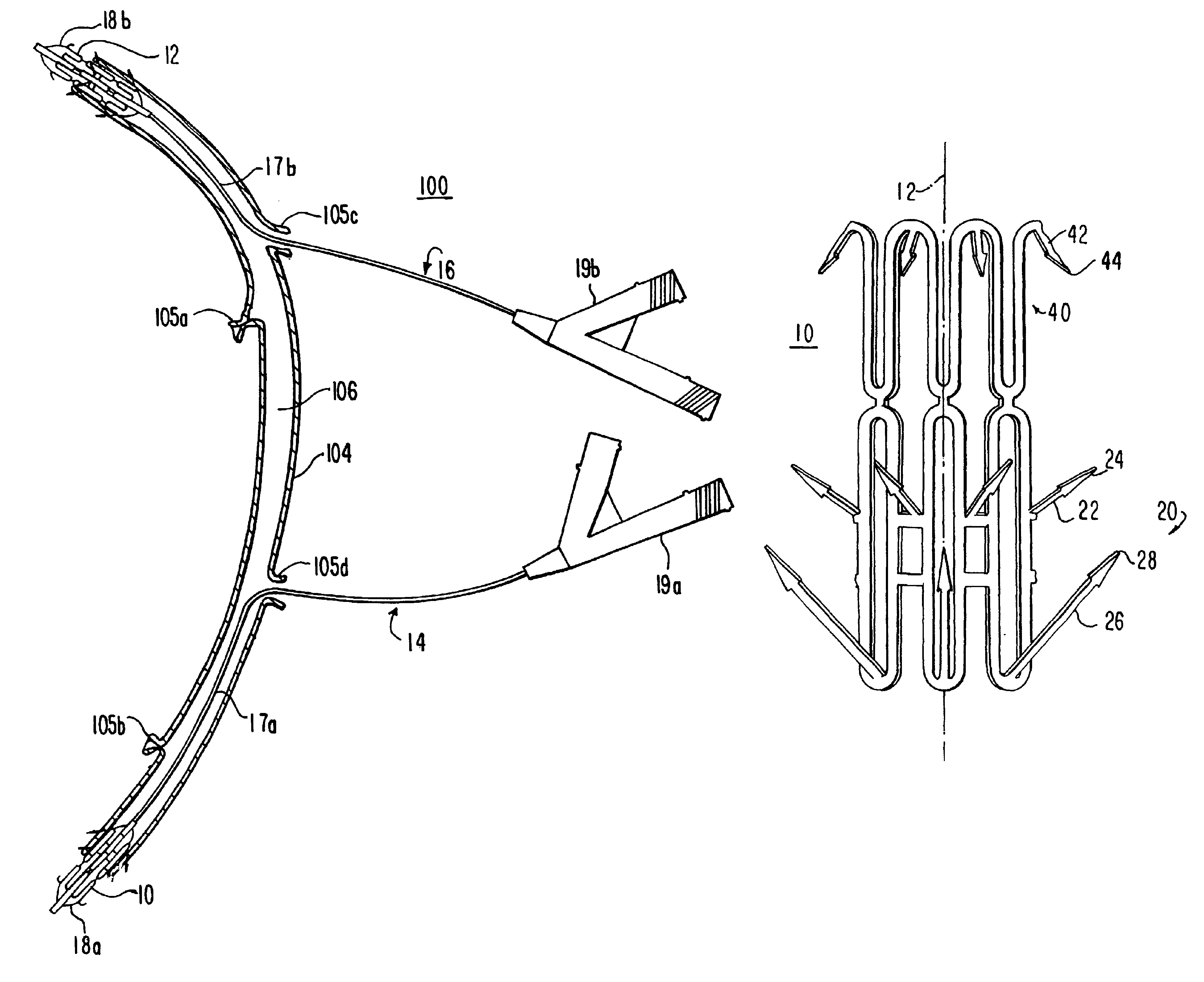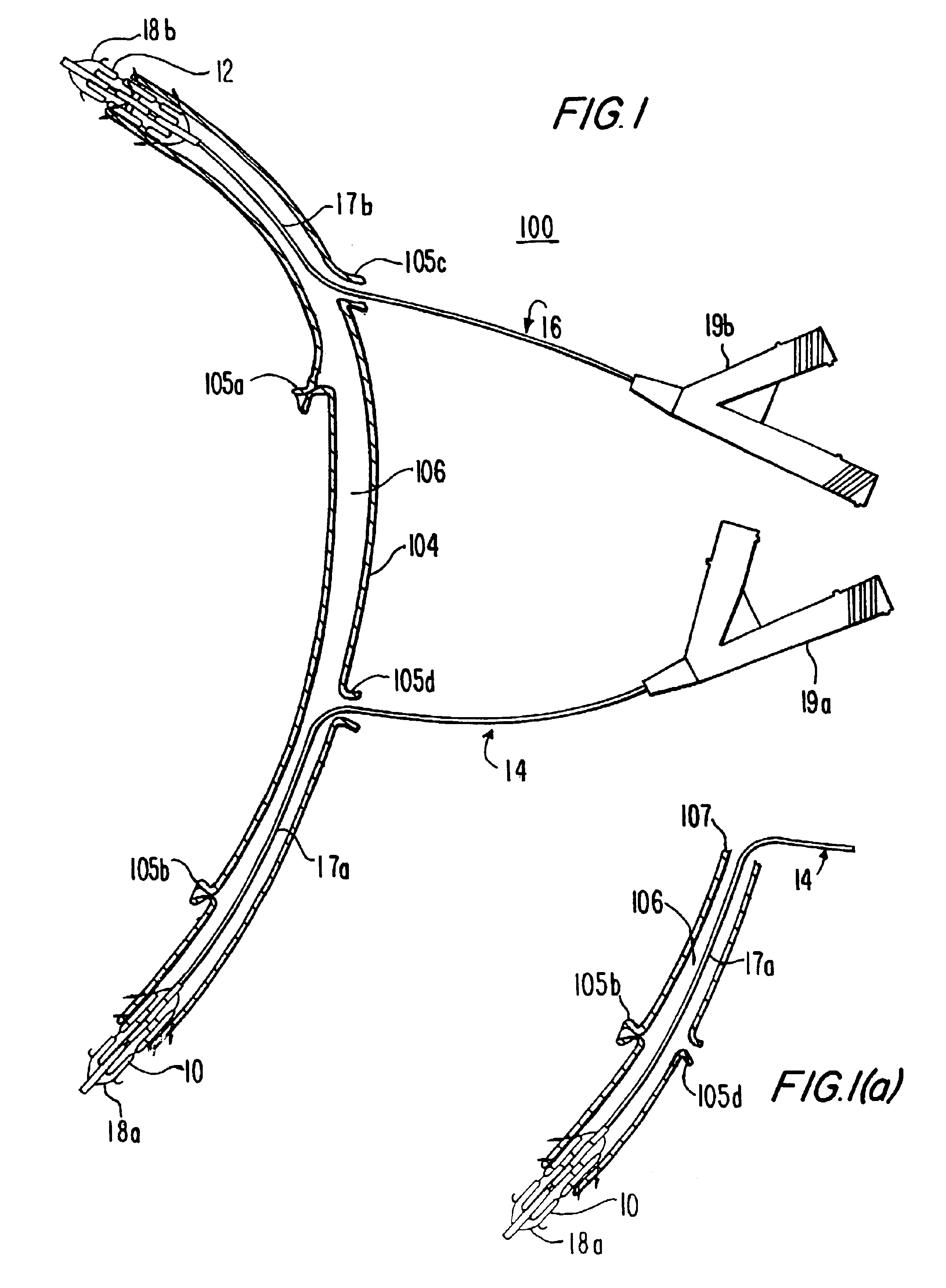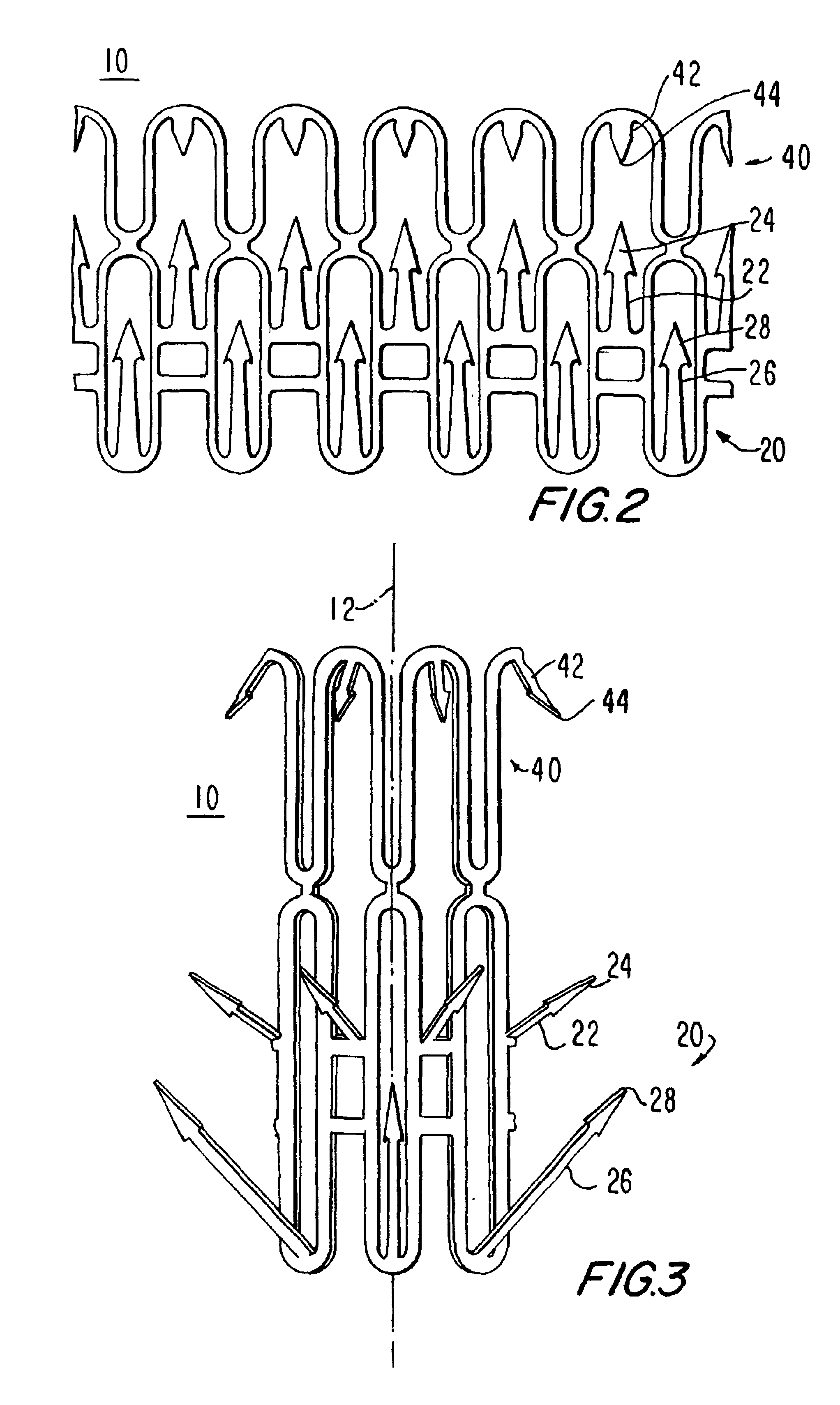Medical grafting methods and apparatus
a technology of grafting and grafting blood, applied in the field of medical methods and equipment, can solve the problems of long patient recovery time, considerable operation time involved, and patient risks, so as to reduce the need to stop the heart, reduce the need for heart and aorta exposure, and reduce the size of the incision
- Summary
- Abstract
- Description
- Claims
- Application Information
AI Technical Summary
Benefits of technology
Problems solved by technology
Method used
Image
Examples
Embodiment Construction
[0054]Although the invention has other possible uses, the invention will be fully understood from the following explanation of its use in providing a bypass around a narrowing in a patient's vascular system. In addition to providing a coronary artery bypass, the invention is useful anywhere in the patient's circulatory system including renal veins and arteries, femoral veins and arteries, abdominal aorta, peripheral bypass in the arms and legs of the patient, A-V shunts, carotid artery, and any other circulatory system bypass. The bypass graft may be a vein, radial artery, internal mammary artery (IMA), other native vessel, or synthetic conduit.
[0055]FIG. 1 illustrates apparatus 100 for installing a graft 104 to the patient's vascular system. Apparatus 100 includes a connector structure 10 useful for making the connection between the graft 104 and the coronary artery (not shown in the FIG.), typically referred to as the “distal” connection. Connector structure 12 is particularly use...
PUM
 Login to View More
Login to View More Abstract
Description
Claims
Application Information
 Login to View More
Login to View More - R&D
- Intellectual Property
- Life Sciences
- Materials
- Tech Scout
- Unparalleled Data Quality
- Higher Quality Content
- 60% Fewer Hallucinations
Browse by: Latest US Patents, China's latest patents, Technical Efficacy Thesaurus, Application Domain, Technology Topic, Popular Technical Reports.
© 2025 PatSnap. All rights reserved.Legal|Privacy policy|Modern Slavery Act Transparency Statement|Sitemap|About US| Contact US: help@patsnap.com



